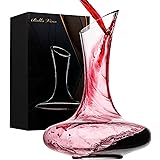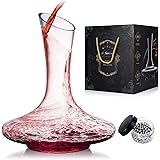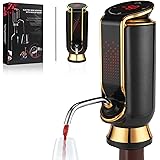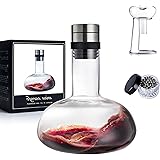The intricate world of wine and food pairing is often perceived as a daunting discipline, but its core principle is quite straightforward: enhancing the sensory enjoyment of each sip and bite. As expertly introduced in the accompanying video, the ultimate goal of successful wine pairing is deeply personal; whatever delights your palate is unequivocally correct. This perspective liberation, articulated by Megan from Highcamp Wines, encourages an explorative approach to gastronomy, shifting focus from rigid rules to individual discovery.
The Foundational Philosophy of Wine Pairing: A Personal Journey
A fundamental understanding of wine pairing dictates that personal preference reigns supreme. While established guidelines provide a valuable starting point, the subjective experience of taste should always be prioritized. It is understood that a truly memorable culinary occasion is often facilitated by a synergistic interaction between the beverage and the dish. Therefore, the selection process is considered an adventure, allowing for experimentation that transcends conventional expectations.
The journey of developing one’s palate is an evolving process, influenced by countless variables including individual biology and cultural background. Consequently, the “right” wine pairing for one person might differ significantly for another. This emphasis on individual taste encourages enthusiasts to confidently explore diverse varietals and culinary creations. Furthermore, the removal of pressure concerning traditional conventions allows for a more authentic and enjoyable interaction with both wine and food.
Mastering the Scale: Matching Body and Intensity
An intuitive method for approaching wine pairing involves visualizing a scale, wherein the intensity and richness of food are matched with the body and character of the wine. This simplified framework allows for rapid assessment of potential harmonies, streamlining the decision-making process. The spectrum ranges from the most delicate foods and wines to the most robust and opulent selections, providing a clear reference point. Consequently, the inherent characteristics of both components are carefully considered to achieve optimal balance.
The concept of “body” in wine, which refers to its perceived weight and viscosity on the palate, is a crucial determinant in this scaling method. Lighter-bodied wines are generally recognized as having a more delicate structure, while full-bodied wines exhibit greater richness and presence. Similarly, food items possess varying degrees of richness, fat content, and flavor intensity. Successful wine and food pairing often involves aligning these inherent qualities, thus ensuring neither the food nor the wine overpowers the other.
Lighter Fare, Lighter Wines: Delicate Harmonies
For dishes characterized by their lightness and subtle flavor profiles, such as fresh salads or delicate seafood, a correspondingly lighter-bodied wine is typically recommended. These wines are often distinguished by their vibrant acidity and crisp finish, which effectively complement the nuances of the food. Notable examples include Pinot Grigio, renowned for its crispness, and Sauvignon Blanc, frequently celebrated for its herbaceous and citrus notes. Other excellent choices in this category include an Albariño, with its saline minerality, or a Grüner Veltliner, known for its peppery zest.
These lighter varietals are thoughtfully paired with a range of culinary items, including oysters, grilled flaky white fish like cod or sole, and goat cheese salads. The high acidity present in these wines serves to cut through any residual richness, refreshing the palate between bites. The objective here is to create a sense of harmony, allowing the delicate aromatics of both the food and the wine to be fully appreciated without one dominating the other. This thoughtful consideration contributes significantly to an elevated dining experience.
Richer Dishes, Robust Vintages: A Symphony of Flavors
Conversely, when confronted with dishes of significant richness and pronounced flavor, such as succulent steaks or slow-cooked barbecue, a more robust and full-bodied wine is generally preferred. These wines typically possess higher levels of tannins and a more complex aromatic profile, which allows them to stand up to and complement the intensity of the food. Cabernet Sauvignon, celebrated for its dark fruit and structured tannins, along with Syrah (or Shiraz), known for its peppery and savory notes, are exemplary choices in this category. Malbec, with its plush fruit and often smoky undertones, or Zinfandel, offering bold fruit and spice, also feature prominently.
Such powerful wines are ideally suited for pairings with rich pastas incorporating meat sauces, hearty stews, or aged, flavorful cheeses. The tannins in these red wines effectively interact with the proteins and fats in the food, cleansing the palate and enhancing the overall flavor. Furthermore, the depth of character found in these bolder vintages provides a counterpoint to the richness of the cuisine. This strategic alignment ensures a balanced and satisfying sensory experience, amplifying the inherent qualities of both elements.
The Versatile Middle Ground: Balancing Act
Occupying the vital middle ground on the pairing scale are wines that exhibit a moderate body and a nuanced flavor profile, offering considerable versatility for a diverse array of dishes. Pinot Noir, with its earthy undertones and red berry aromatics, is frequently regarded as a supremely adaptable varietal. Grenache, known for its juicy fruit and soft tannins, also presents a flexible option. Chardonnay, particularly those unoaked or with minimal oak influence, can also be categorized here, offering a spectrum from crisp apple to creamy pear notes depending on its vinification.
These adaptable wines are frequently employed in food and wine pairing with poultry, leaner cuts of pork, and various mushroom-based dishes. The ability of these wines to complement both light and somewhat richer foods makes them invaluable for everyday dining or casual gatherings. Their balanced acidity and fruit-forward characteristics ensure they neither overwhelm nor are overwhelmed by the accompanying cuisine. The thoughtful selection of such a varietal can simplify many dinner table decisions, proving that harmonious pairings are not always complex undertakings.
Beyond the Plate: Pairing Wine with Life’s Moments
The concept of wine pairing extends far beyond the confines of a formal dining experience; it encompasses the enhancement of life’s everyday moments and special events. The atmosphere, the occasion, and the prevailing mood often dictate the most appropriate wine selection, transforming a simple beverage into a catalyst for cherished memories. This approach encourages a holistic view of enjoyment, where the wine becomes an integral part of the overall sensory experience.
Consider the effervescent joy of a music festival, where a crisp Sauvignon Blanc or a lively Prosecco perfectly complements the vibrant outdoor setting and lighthearted ambiance. For a tranquil beach sunset, the romantic allure of a Rosé, with its delicate fruit and refreshing finish, is frequently deemed ideal. Similarly, a cozy evening at home might be elevated by a comforting Merlot, its soft tannins and plum notes providing a perfect accompaniment to relaxation. Celebratory occasions, such as anniversaries or milestones, are almost invariably enhanced by the festive bubbles of Champagne or a premium sparkling wine. The careful consideration of context thus allows for a more profound connection with the wine, making each moment more significant.
Enhancing the Experience: Key Pairing Principles
While the “scale” method offers a foundational structure, a deeper appreciation for wine pairing involves understanding a few key principles. These principles, rooted in the inherent chemical and aromatic properties of both wine and food, explain why certain combinations create such profound synergy. The mastery of these concepts allows for more informed and innovative choices, moving beyond mere guesswork. Ultimately, the aim is to create a dynamic interplay of flavors and textures, ensuring a truly exceptional gastronomic encounter.
Effective pairings are often achieved by considering elements such as acidity, sweetness, bitterness, saltiness, and the presence of fat in both the food and the wine. The interaction of these components can either create harmonious complements or intriguing contrasts. Knowledge of these interactions empowers individuals to confidently experiment with diverse culinary combinations. The discerning palate, once attuned to these subtleties, can unlock a world of sensory delights, transforming ordinary meals into extraordinary experiences.
Complementary Pairings: Building Bridges of Flavor
Complementary pairings are achieved when the flavor profiles of the wine and food share similar characteristics, thereby enhancing each other. For example, an earthy Pinot Noir is often recognized as an ideal companion for mushroom-based dishes, as both elements possess delightful umami notes. The subtle spice in a Syrah can find a beautiful echo in a dish seasoned with black pepper or smoked paprika. This principle operates on the premise that “like attracts like,” creating a seamless bridge between the components. The shared flavor architecture ensures a cohesive and integrated sensory experience.
Furthermore, the fruit notes in a wine can be complemented by similar fruit components in a dish, creating layers of flavor. A rich Chardonnay with notes of butter and vanilla often pairs beautifully with a creamy chicken dish, where these shared characteristics are amplified. The goal is to build upon existing flavors, intensifying the overall enjoyment without introducing clashing elements. This approach celebrates the inherent qualities of both the wine and the food, allowing their best attributes to shine in unison.
Contrasting Pairings: The Art of Dynamic Balance
Conversely, contrasting pairings leverage opposing elements to create a dynamic and refreshing balance on the palate. One of the most classic examples involves pairing a high-acid wine with a rich, fatty food. The acidity in the wine acts as a palate cleanser, effectively cutting through the richness and preparing the palate for the next bite. For instance, a crisp Sauvignon Blanc with its bright acidity is frequently recommended with fried calamari, as it provides a refreshing counterpoint to the fried batter. Similarly, the sweetness of a dessert wine can be balanced by the saltiness of an aged blue cheese, creating a delightful push-pull effect.
This principle also extends to spicy foods, where a slightly sweet wine can mitigate the heat, or sparkling wines, which can provide a textural contrast to creamy dishes. The strategic use of contrasting elements prevents palate fatigue and maintains interest throughout the meal. It is through these deliberate juxtapositions that truly memorable and exciting food and wine pairing experiences are often created. This demonstrates that harmony can emerge from difference, enriching the overall gastronomic journey.
Uncork Your Own Adventure: Embracing Exploration
Ultimately, the journey of discovering perfect wine pairing is a deeply personal and enjoyable adventure. As encouraged in the video, the most effective way to cultivate your understanding and refine your palate is through active exploration. This involves stepping outside of your comfort zone, perhaps by selecting a bottle from the shelf that has previously gone untried. The process of tasting new varietals and observing their interactions with various foods is an invaluable learning experience.
It is strongly recommended that notes be taken during these exploratory sessions, documenting observations about flavors, textures, and preferred combinations. This systematic approach allows for the development of a personal reference library, which will guide future selections. Additionally, engaging with the wider wine community, perhaps by visiting local wineries like those found in SLO CAL, provides opportunities for shared experiences and expanded knowledge. Winemakers often create their products with the intention of sharing, and their passion for viticulture is frequently contagious. Embracing this spirit of inquiry will undoubtedly lead to a more profound and satisfying appreciation of wine.







